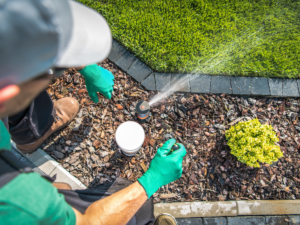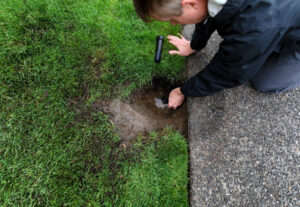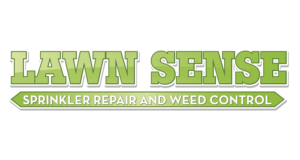 A properly functioning sprinkler system is the backbone of a healthy yard. It keeps grass green, plants hydrated, and landscaping in top shape.
A properly functioning sprinkler system is the backbone of a healthy yard. It keeps grass green, plants hydrated, and landscaping in top shape.
But when the system suffers from low water pressure, everything changes. Dry patches start appearing and sprinkler heads sputter weakly.
Low water pressure is a common but frustrating issue. It has multiple causes, from clogged sprinkler heads to municipal water supply problems.
The good news? Many of these problems are fixable. This article will break down the most common causes of low sprinkler water pressure, how to troubleshoot issues, and what to do to regain adequate water pressure.
Key Takeaways
- Low water pressure can result from clogs, leaks, or valve issues.
- Water supply problems, pipe size, and backflow preventers also impact pressure.
- Troubleshooting involves checking individual components and system-wide issues.
- Some fixes are simple DIY tasks; others require a professional.
- Preventative maintenance reduces the chances of future pressure issues.
8 Common Causes of Low Water Pressure in Sprinkler Systems
If your sprinkler system isn’t delivering enough pressure, you’re not alone. Many homeowners deal with weak sprays and uneven coverage. Let’s explore the most frequent causes behind low sprinkler pressure.
Clogged or Damaged Sprinkler Heads
Sprinkler heads are the last stop in your irrigation system, and they take a beating. Dirt, grass clippings, and debris can clog them, reducing water flow.
One way to tell if this is the issue are if some sprinklers work fine while others barely spray. Cleaning the heads regularly can prevent buildup. If cleaning doesn’t restore proper function, the head may be damaged and need replacing.
Leak or Break in Irrigation System
Leaks are a silent enemy of water pressure. They can happen due to underground damage, digging accidents, or simple wear and tear. Even a small leak can lead to a big drop in performance.
Signs of a leak:
- Soggy patches in the lawn
- Water bubbling up from the ground
- Multiple sprinkler heads failing to spray properly
Leaks waste water and can worsen over time. A sprinkler repair professional should address them immediately.
Water Line Obstruction
Over time, roots from trees and shrubs can press against or grow into your sprinkler lines. This blockage slows or even stops water flow entirely, reducing pressure in certain zones.
If some parts of your lawn get strong coverage while others don’t, a buried obstruction may be the cause. A professional inspection can confirm the issue and remove the blockage.
Water Supply Issues and Municipal Water Pressure
Sometimes, the problem isn’t with your sprinkler system but with your home’s overall water supply. When municipal water usage spikes—such as in summer when everyone waters their lawns—pressure can drop for everyone.
To check:
- See if indoor water fixtures also have low pressure.
- Contact your local water provider if you suspect a supply issue.
Shut-Off or Main Water Valves Aren’t Fully Open
Valves control water flow throughout your sprinkler system, and if they aren’t completely open, pressure will suffer. Even a slightly closed valve can create significant issues.
To troubleshoot:
- Locate your sprinkler system’s shut-off valve and main water valve.
- Ensure they are fully open.
- If you’re unsure about their location or function, call a professional.
Backflow Preventer Valve Issue
Your sprinkler system has a backflow preventer to stop contaminated water from flowing into your clean water supply. If this device is partially closed, water pressure will be restricted.
To check:
- Locate the horizontal and vertical pipes.
- Ensure both valves are parallel to the pipe.
- If unsure, contact a professional to prevent mistakes.
Incorrect Zone Valve Settings
Sprinkler zones divide your yard into sections to ensure even watering. If a zone valve isn’t working correctly, pressure issues can arise.
Common problems include:
- Incorrect installation – Two zones pulling from the same source reduce pressure.
- Faulty timer settings – One zone may not receive full pressure.
Check zone valves and timer settings to ensure proper function.
Irrigation Pipes That Are Too Small
The size of your irrigation pipes determines water flow. If your system was designed with undersized pipes, pressure loss is inevitable. Larger pipes allow better flow and more consistent pressure.
Troubleshooting Low Water Pressure in Sprinkler System
 Diagnosing low pressure issues yourself can save time and money. Here’s where to start.
Diagnosing low pressure issues yourself can save time and money. Here’s where to start.
Check for Clogged or Damaged Sprinkler Heads
Sprinkler heads can become clogged with dirt and debris, causing weak or uneven sprays. Cleaning or replacing them is often a quick fix.
- Turn off the water supply.
- Remove a sprinkler head.
- Inspect for dirt or cracks.
- Clean or replace if needed.
Determine if the Leak is Inside or Outside
Finding the source of a leak is key to fixing pressure issues.
- Turn off the main water valve.
- Check the water meter. If it’s moving, there’s a leak outside.
Inspect the Irrigation System for Leaks
Leaks can form underground, inside valve boxes, or along the sprinkler lines. Look for wet patches, bubbling water, or muddy spots where pipes may be damaged.
Test Water Pressure with a Gauge
Different sprinkler types require different PSI levels to function properly. Using a pressure gauge can help determine if your system’s pressure is too low.
Assess the Water Supply Line
Your main water supply line might have a hidden leak. A water meter test can help detect unnoticed pressure loss.
Measure Sprinkler Spacing
If sprinklers are too close together or too far apart, pressure distribution can be uneven. Proper spacing ensures consistent coverage.
Solutions for Low Water Pressure in Sprinkler Systems
Some pressure issues have easy fixes. Others require professional intervention. Here’s what you can do.
Install a Home Filtration System Bypass
If your home uses a water filtration system, it could be restricting flow to your sprinklers. A bypass may improve pressure.
Clean or Replace Sprinkler Heads
Routine maintenance prevents blockages. Use a small wire or specialized cleaning tool to clear clogged nozzles.
Fix Sprinkler Valve Leak
- Turn off the water.
- Locate the faulty valve.
- Replace the diaphragm if needed.
Replace a Section of Supply Line
If a pipe is cracked or leaking:
- Cut out the damaged section.
- Replace with new PVC or hose.
- Secure with clamps or fittings.
Adjust Zone Valves for Optimal Pressure
- Ensure valves are fully open.
- Check for incorrect timer settings.
Add a Booster Pump
If your home has naturally low water pressure, a booster pump may be needed to increase flow to sprinklers.
Quick List of Preventive Maintenance Tips
Keeping your sprinkler system in top shape prevents future pressure problems.
- Regularly inspect and clean sprinkler heads.
- Perform seasonal system checkups.
- Upgrade outdated components.
- Flush the system to remove debris.
Contact Lawn Sense for Low Water Pressure Issues
 Diagnosing sprinkler pressure problems early prevents bigger issues. If troubleshooting doesn’t restore function, call in the experts. Lawn Sense provides sprinkler fault locating and lawn care services in Dallas, TX, and surrounding areas.
Diagnosing sprinkler pressure problems early prevents bigger issues. If troubleshooting doesn’t restore function, call in the experts. Lawn Sense provides sprinkler fault locating and lawn care services in Dallas, TX, and surrounding areas.
Lawn Sense means no nonsense—professional repairs done right the first time.
FAQs
Many homeowners have questions about low water pressure in sprinkler systems. Here are some of the most common concerns and answers to help you troubleshoot more effectively.
Can tree roots reduce sprinkler water pressure?
Yes, roots can wrap around or grow into pipes, restricting flow.
How do I increase my sprinkler pressure?
Check valves, clean heads, inspect for leaks, and consider a booster pump if needed.
Does using multiple sprinkler zones at once lower pressure?
Yes, running too many zones simultaneously can decrease water pressure. It’s best to stagger watering times.
What PSI should my sprinkler system have?
- Spray heads: 20–40 PSI
- Rotary heads: 30–90 PSI
- Drip emitters: 15–40 PSI
Final Thoughts
Low water pressure can ruin a sprinkler system’s performance. Causes range from simple clogs to underground pipe obstructions. Some issues are easy DIY fixes; others require professional help. If you need expert sprinkler repair, Lawn Sense has you covered.